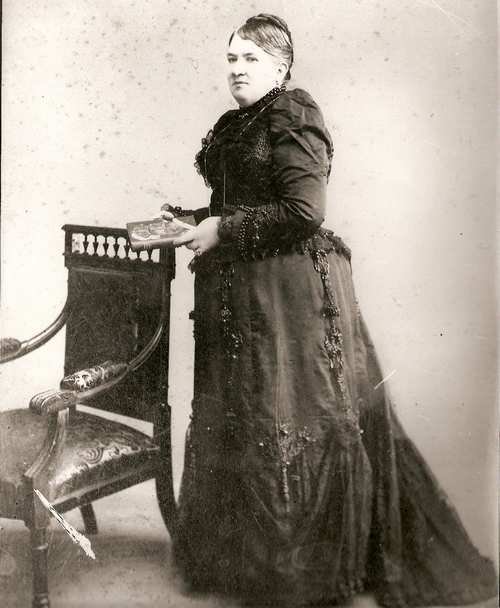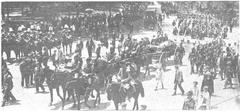
Luis Sáenz Peña Buenos Aires: Hours, Tickets, and Complete Tourist Guide
Date: 14/06/2025
Introduction
Luis Sáenz Peña is a distinctive neighborhood and transport hub situated in the Greater Buenos Aires area, bridging the historic Monserrat district and the city’s vibrant core. Named after the former Argentine president (1892–1895), the area embodies Argentina’s political history, urban transformation, and rich cultural legacy. Visitors to Luis Sáenz Peña will find a blend of historical sites, architectural landmarks, creative spaces, and authentic local experiences—all easily accessible via public transportation.
This guide offers a comprehensive overview of Luis Sáenz Peña’s evolution, practical visiting details, and suggestions for making the most of your trip. Whether you are a history buff, a culture enthusiast, or a traveler seeking an off-the-beaten-path experience, this neighborhood delivers a unique perspective on Buenos Aires (Wikipedia: Sáenz Peña, Buenos Aires; solsalute.com).
Historical Overview
From Rural Estate to Urban Hub
Luis Sáenz Peña’s origins date to the early 17th century when it was a rural estate. The land changed hands over the centuries, notably acquired by Manuel Lynch in 1850. After his death, the estate was subdivided and sold, paving the way for urbanization—a trend mirrored throughout Buenos Aires as the city expanded beyond its colonial center (Wikipedia: Sáenz Peña, Buenos Aires).
The Arrival of the Railway
The pivotal moment in the neighborhood’s development came with the inauguration of the Sáenz Peña railway station in 1910, named in honor of President Luis Sáenz Peña. This brought swift integration into Greater Buenos Aires, fostering residential growth and commercial activity. The station remains a central landmark and gateway for visitors today (Wikipedia: Sáenz Peña, Buenos Aires).
Urban Modernization
Electrification arrived in 1912, followed by the establishment of a police station and telephone lines in the 1920s. These milestones were emblematic of Buenos Aires’ modernization in the early 20th century, transforming Sáenz Peña into a thriving urban community (Wikipedia: Sáenz Peña, Buenos Aires).
The Legacy of Luis Sáenz Peña
Luis Sáenz Peña was a prominent lawyer and politician, serving as Argentina’s president during a period marked by economic and political challenges. His legacy is memorialized in the neighborhood and station bearing his name—a reflection of Argentina’s tradition of commemorating national leaders through public spaces (Wikipedia: Sáenz Peña, Buenos Aires; Wikipedia: Luis Sáenz Peña).
Architectural and Cultural Highlights
Architectural Heritage
Sáenz Peña showcases early 20th-century architecture with European influences—ornate facades, wrought-iron balconies, and grand entrances. Notable adaptive reuse projects, such as La Botica del Ángel (a former Methodist temple turned arts center), highlight the area’s creative spirit (Arcón de Buenos Aires).
La Botica del Ángel
Located at Luis Sáenz Peña 541, La Botica del Ángel is a scenography museum and cultural venue. Originally transformed in the 1960s by Eduardo Bergara Leumann, it remains a hub for avant-garde arts, with 33 uniquely decorated rooms and frequent workshops and exhibitions. The museum is open Tuesday to Saturday, 11:00 AM–6:00 PM, with tickets (approx. ARS 500) booked in advance via the Universidad del Salvador’s cultural office (Turismo Buenos Aires).
Local Life
Sáenz Peña’s cafés, bakeries, and local shops offer a window into porteño daily life. The neighborhood is less touristy than nearby Recoleta or San Telmo, making it ideal for those seeking authenticity. On weekends, Plaza Luis Sáenz Peña comes alive with artisanal markets and community events (solsalute.com).
Practical Visitor Information
Getting There
- By Train: Take the Ferrocarril Urquiza to Sáenz Peña station (Trenes Argentinos).
- By Subway: Sáenz Peña station on Subte Line A is near the Monserrat district.
- By Bus: Numerous city buses (colectivos) serve the area.
Visiting Hours and Tickets
- Public Spaces and Plazas: Open 24/7, free entry.
- La Botica del Ángel: Tue–Sat, 11:00 AM–6:00 PM. Tickets required.
- Iglesia Nuestra Señora de Montserrat: Daily, 9:00 AM–6:00 PM, free entry (donations welcome).
- Railway/Subte Stations: Operational from about 5:00 AM to midnight. SUBE card required for train/subway travel.
Accessibility
Sidewalks and public facilities are generally accessible, though some older buildings may pose challenges for those with mobility concerns. Confirm specific accessibility needs in advance.
Safety
The area is considered safe during the day. Exercise routine urban precautions, especially at night. Use official taxis or ride-sharing apps for added security (The Broke Backpacker).
Accommodation
While Sáenz Peña itself has limited hotel options, nearby downtown Buenos Aires offers a wide range of accommodations, from budget hostels to boutique hotels (solsalute.com).
Dining and Nightlife
Enjoy traditional parrillas (steakhouses), bodegones (classic eateries), and cafés with vintage decor. Nightlife is understated but includes small bars with occasional live music (cntraveler.com).
Suggested Itineraries
1-Day Visit
- Morning: Arrive via train or subway, explore Plaza Luis Sáenz Peña and local architecture.
- Midday: Guided tour of La Botica del Ángel.
- Afternoon: Visit Iglesia Nuestra Señora de Montserrat, enjoy coffee in a local café.
- Evening: Walk to nearby Monserrat or San Telmo for dinner and cultural sites.
3-Day Exploration
- Day 1: Historic landmarks in and around Sáenz Peña.
- Day 2: Museums and creative spaces, including workshops at La Botica del Ángel.
- Day 3: Neighboring districts—Monserrat, San Telmo, and Microcentro.
Frequently Asked Questions (FAQ)
Q: Do I need tickets to visit Sáenz Peña?
A: No tickets for public areas; train/subway travel requires a SUBE card. La Botica del Ángel requires advance ticket booking.
Q: What are the best times to visit?
A: Spring (Sep–Nov) and autumn (Mar–May) offer pleasant weather and lively markets.
Q: Is the area safe?
A: Generally safe during the day; use standard precautions at night.
Q: Are English tours available?
A: Yes, at La Botica del Ángel and through some city tour operators (reserve in advance).
Visuals and Maps
- Photos of Plaza Luis Sáenz Peña, local architecture, and La Botica del Ángel.
- Interactive map of the neighborhood and nearby attractions.
Internal and External Links
Summary and Recommendations
Luis Sáenz Peña is a neighborhood where Argentina’s layered history, creative energy, and everyday life converge. From its transformation from rural estate to dynamic urban community, to its vibrant arts scene and welcoming plazas, Sáenz Peña offers an enriching experience for travelers seeking the genuine spirit of Buenos Aires. Plan your visit for daytime hours, use public transportation with a SUBE card, and explore both the neighborhood’s historic and cultural landmarks for a comprehensive adventure (Wikipedia: Sáenz Peña, Buenos Aires; solsalute.com; Trenes Argentinos).
References and Further Reading
- Sáenz Peña, Buenos Aires, Wikipedia
- Luis Sáenz Peña, Wikipedia
- Secrets of Buenos Aires’ Historic Quarter, Turismo Buenos Aires
- Buenos Aires Neighborhoods Guide, Solsalute
- Trenes Argentinos Official Website
- La Botica del Ángel, Arcón de Buenos Aires
- Buenos Aires Itinerary, Worldly Adventurer
- Buenos Aires Travel Guide, The Broke Backpacker
- Buenos Aires Attractions, Condé Nast Traveler






























































































































































